There have been a lot of rumors and a lot of alleged leaks about a higher-end Samsung (SSNLF) Galaxy S5 hitting the market soon. This version, dubbed the Galaxy S5 Prime, is said to sport 3GB of RAM (up from 2GB in the current S5) and a quad-HD (2560x1440) display, up from 1920x1080 on the pain S5. It is also said to sport either a next-generation Exynos processor coupled with an Intel XMM 7260 modem ora Qualcomm (QCOM) Snapdragon 805 paired presumably with the latest MDM9x35 modem from Qualcomm.
What are the odds that this model even exists? We very recently saw news of the LG G3's 2560x1440 display hit the Web over the last week or so, and given that LG is probably going to play up this feature, Samsung is also likely to want to be able to keep up in the smartphone "resolution wars." Interestingly enough, though, the LG G3 will apparently sport a 5.5-inch 2560x1440 panel. If the rumors around Samsung's phone are correct, the S5 Prime should offer even higher pixel density at the same resolution on a 5.1-inch display.
That being said, such a phone is likely to be extremely expensive to make. Samsung already launched the Galaxy S5 (which had a larger screen than the S4, faster/likely more expensive processor, and other enhanced goodies) for about $100 less than the Galaxy S4 debuted at. This means if the company wants to preserve its margins here, it will either need to sell the purported S5 Prime for significantly more than the current S5, or the S5 Prime won't really sport these BoM-cost-ballooning features.
Should Apple worry? The big question then is whether Apple (AAPL) -- which has been on an absolute roll with its iPhone products lately -- has anything to be worried about vis-a-vis an even higher end, premium-tier Galaxy S5. While Samsung would handily win the "spec wars" with three times the RAM and a much sharper display, it's important to note that Apple's key differentiation point isn't necessarily the hardware, but the harmony of the hardware and the software.
For customers who prefer the ease of use of iOS, there is simply no alternative to Apple, and mainstream customers who are "used to" iOS have a rich library of iOS apps and are also probably hooked into iTunes won't switch to a Samsung/Android phone. It is this differentiation via software (which is R&D intensive but very COGS-friendly) that helps Apple not only maintain its share of the high end, but also allows it to do so with fantasticprofitability.
Conclusion Samsung, LG, and the hordes of Android vendors can bring in the flashiest displays and biggest "on-paper" specifications, but for many users, iOS and the ecosystem that surround it are what make Apple's phones worth the premium, not necessarily the hardware. Any company can buy an obscenely expensive, high-resolution panel and put a ton of RAM in its phones, but not any company can build the ecosystem, the brand, and the customer loyalty that Apple has.
| Currently 0.00/512345 Rating: 0.0/5 (0 votes) | |

Subscribe via Email

Subscribe RSS Comments Please leave your comment:
More GuruFocus Links
| Latest Guru Picks | Value Strategies |
| Warren Buffett Portfolio | Ben Graham Net-Net |
| Real Time Picks | Buffett-Munger Screener |
| Aggregated Portfolio | Undervalued Predictable |
| ETFs, Options | Low P/S Companies |
| Insider Trends | 10-Year Financials |
| 52-Week Lows | Interactive Charts |
| Model Portfolios | DCF Calculator |
RSS Feed  | Monthly Newsletters |
| The All-In-One Screener | Portfolio Tracking Tool |

MORE GURUFOCUS LINKS
| Latest Guru Picks | Value Strategies |
| Warren Buffett Portfolio | Ben Graham Net-Net |
| Real Time Picks | Buffett-Munger Screener |
| Aggregated Portfolio | Undervalued Predictable |
| ETFs, Options | Low P/S Companies |
| Insider Trends | 10-Year Financials |
| 52-Week Lows | Interactive Charts |
| Model Portfolios | DCF Calculator |
RSS Feed  | Monthly Newsletters |
| The All-In-One Screener | Portfolio Tracking Tool |
AAPL STOCK PRICE CHART

90.91 (1y: +58%) $(function(){var seriesOptions=[],yAxisOptions=[],name='AAPL',display='';Highcharts.setOptions({global:{useUTC:true}});var d=new Date();$current_day=d.getDay();if($current_day==5||$current_day==0||$current_day==6){day=4;}else{day=7;} seriesOptions[0]={id:name,animation:false,color:'#4572A7',lineWidth:1,name:name.toUpperCase()+' stock price',threshold:null,data:[[1372050000000,57.506],[1372136400000,57.519],[1372222800000,56.867],[1372309200000,56.254],[1372395600000,56.647],[1372654800000,58.46],[1372741200000,59.784],[1372827600000,60.114],[1373000400000,59.631],[1373259600000,59.293],[1373346000000,60.336],[1373432400000,60.104],[1373518800000,61.041],[1373605200000,60.93],[1373864400000,61.063],[1373950800000,61.456],[1374037200000,61.473],[1374123600000,61.68],[1374210000000,60.707],[1374469200000,60.901],[1374555600000,59.856],[1374642000000,62.93],[1374728400000,62.643],[1374814800000,62.999],[1375074000000,63.97],[1375160400000,64.76],[1375246800000,64.647],[1375333200000,65.239],[1375419600000,66.077],[1375678800000,67.064],[1375765200000,66.464],[1375851600000,66.426],[1375938000000,65.859],[1376024400000,64.921],[1376283600000,66.766],[1376370000000,69.939],[1376456400000,71.214],[1376542800000,71.13],[1376629200000,71.761],[1376888400000,72.534],[1376974800000,71.581],[1377061200000,71.766],[1377147600000,71.851],[1377234000000,71.574],[1377493200000,71.853],[1377579600000,69.799],[1377666000000,70.128],[1377752400000,70.243],[1377838800000,69.602],[1378184400000,69.797],[1378270800000,71.242],[1378357200000,70.753],[1378443600000,71.174],[1378702800000,72.31],[1378789200000,70.663],[1378875600000,66.816],[1378962000000,67.527],[1379048400000,66.414],[1379307600000,64.303],[1379394000000,65.046],[1379480400000,66.383],[1379566800000,67.471],[1379653200000,66.773],[1379912400000,70.091],[1379998800000,69.871],[1380085200000,68.79],[1380171600000,69.46],[1380258000000,68.964],[1380517200000,68.107],[1380603600000,69.709],[1380690000000,69.937],[1380776400000,69.059],[1380862800000,69.004],[1381122000000,69.679],[1381208400000,68.706],[1381294800000,69.513],[1381381200000,69.948],[1381467600000,70.402],[1381726800000,70.863],[1381813200000,71.24],[1381899600000,71.588],[1381986000000,72.071],[1382072400000,72.699],[1382331600! 000,74.48],[1382418000000,74.267],[1382504400000,74.994],[1382590800000,75.987],[1382677200000,75.137],[1382936400000,75.697],[1383022800000,73.811],[1383109200000,74.985],[1383195600000,74.672],[1383282000000,74.29],[1383544800000,75.25],[1383631200000,75.064],[1383717600000,74.417],[1383804000000,73.213],[1383890400000,74.366],[1384149600000,74.15],[1384236000000,74.287],[1384322400000,74.376],[1384408800000,75.451],[1384495200000,74.999],[1384754400000,74.09],[1384840800000,74.221],[1384927200000,73.571],[1385013600000,74.448],[1385100000000,74.257],[1385359200000,74.82],[1385445600000,76.2],[1385532000000,77.994],[1385704800000,79.439],[1385964000000,78.747],[1386050400000,80.903],[1386136800000,80.714],[1386223200000,81.129],[1386309600000,80.003],[1386568800000,80.919],[1386655200000,80.793],[1386741600000,80.194],[1386828000000,80.077],[1386914400000,79.204],[1387173600000,79.643],[1387260000000,79.284],[1387346400000,78.681],[1387432800000,77.78],[1387519200000,78.431],[1387778400000,81.441],[1387864800000,81.096],[1388037600000,80.557],[1388124000000,80.013],[1388383200000,79.217],[1388469600000,80.146],[1388642400000,79.019],[13887




 ) announced on Monday afternoon that it is acquiring Russian Pharmaceutical company Veropharm.
) announced on Monday afternoon that it is acquiring Russian Pharmaceutical company Veropharm.
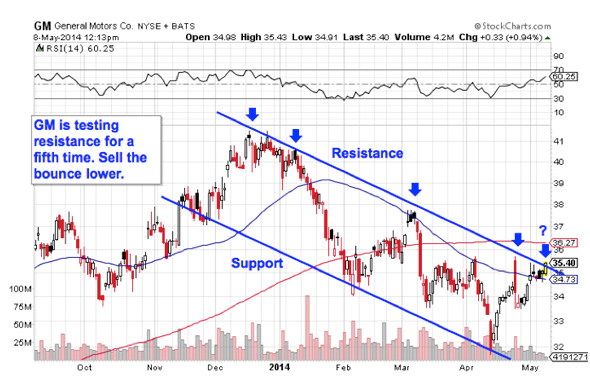
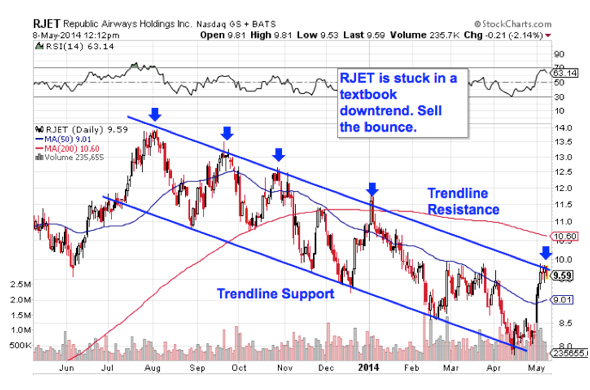
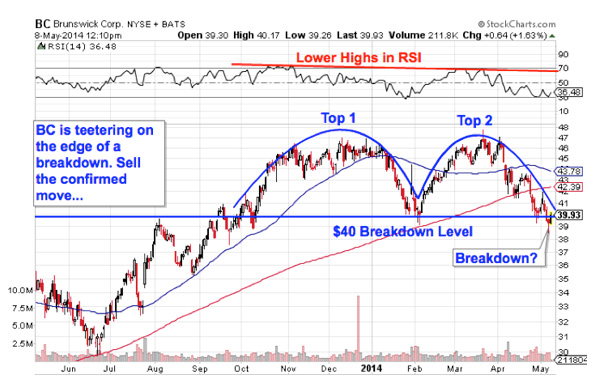
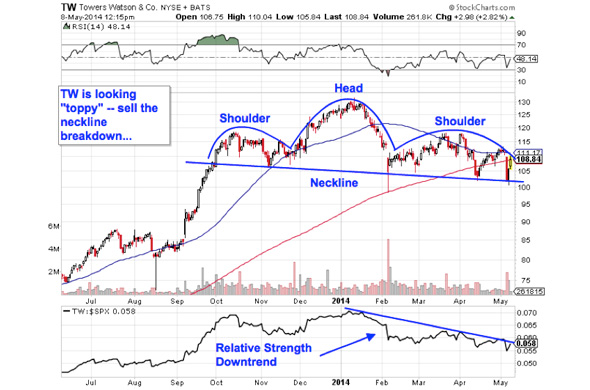
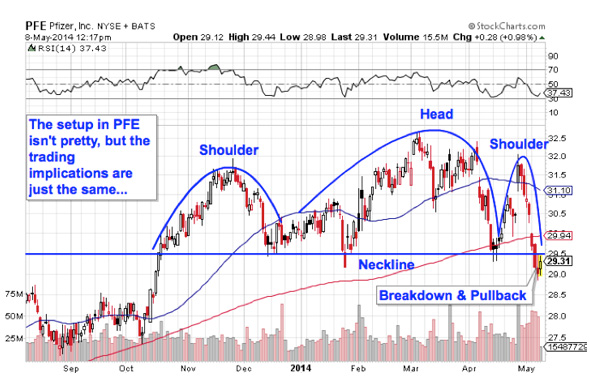
 Related BZSUM Mid-Day Market Update: Ambarella Slips On Analyst Downgrade; Juno Therapeutics Shares Surge Mid-Morning Market Update: Markets Edge Higher; Carl Icahn Discloses Stake In Manitowoc
Related BZSUM Mid-Day Market Update: Ambarella Slips On Analyst Downgrade; Juno Therapeutics Shares Surge Mid-Morning Market Update: Markets Edge Higher; Carl Icahn Discloses Stake In Manitowoc 
 51.38 (1y: +7%) $(function() { var seriesOptions = [], yAxisOptions = [], name = 'NUE', display = ''; Highcharts.setOptions({ global: { useUTC: true } }); var d = new Date(); $current_day = d.getDay(); if ($current_day == 5 || $current_day == 0 || $current_day == 6){ day = 4; } else{ day = 7; } seriesOptions[0] = { id : name, animation:false, color: '#4572A7', lineWidth: 1, name : name.toUpperCase() + ' stock price', threshold : null, data : [[1358834400000,48.11],[1358920800000,47.98],[1359007200000,47.78],[1359093600000,47.68],[1359352800000,47.19],[1359439200000,47.04],[1359525600000,46.3],[1359612000000,46.01],[1359698400000,46.98],[1359957600000,46.12],[1360044000000,46.23],[1360130400000,46.96],[1360216800000,46.28],[1360303200000,46.74],[1360562400000,46.87],[1360648800000,47.24],[1360735200000,47.47],[1360821600000,48.23],[1360908000000,48.12],[1361253600000,47.72],[1361340000000,45.95],[1361426400000,44.7],[1361512800000,45.18],[1361772000000,43.71],[1361858400000,43.85],[1361944800000,44.93],[1362031200000,45.05],[1362117600000,44.37],[1362376800000,45.02],[1362463200000,45.41],[1362549600000,46.49],[1362636000000,46.78],[1362722400000,47.65],[1362978000000,47.56],[1363064400000,47.34],[1363150800000,46.54],[1363237200000,46.43],[1363323600000,46.6],[1363582800000,46.25],[1363669200000,46.15],[1363755600000,46.77],[1363842000000,46.4],[1363928400000,46.15],[1364187600000,45.89],[1364274000000,45.99],[1364360400000,46.01],[1364446800000,46.15],[1364792400000,45.14],[1364878800000,43.65],[1364965200000,43.07],[1365051600000,43.5],[1365138000000,43.76],[1365397200000,43.94],[1365483600000,44.44],[1365570000000,44.98],[1365656400000,44.99],[1365742800000,44.31],[1366002000000,42.79],[1366088400000,43.39],[1366174800000,42.53],[1366261200000,42.23],[1366347600000,42.38],[1366606800000,42.33],[1366693200000,42.3],[1366779600000,43.68],[1366866000000,43.44],[1366952400000,42.79],[1367211600000,43.14],[1367298000000,43.62],[1367384400000,42.93],[1367470800000,43.4],[1367557200000,44.92],[1367816400000,44.65],[1367902800000,45.06],[1367989200000,45.87],[1368075600000,45.45],[1368162000000,45.35],[1368421200000,44.89],[1368507600000,45.34],[1368594000000,45.23],[1368680400000,44.99],[1368766800000,45.77],[1369026000000,46.15],[1369112400000,47.1],[1369198800000,46.1],[1369285200000,45.7],[1369371600000,45.22],[1369717200000,46.15],[1369803600000,45.73],[1369890000000,45.64],[1369976400000,44.51],[1370235600000,44.96],[1370322000000,45.16! ],[1370408400000,44.34],[1370494800000,44.48],[1370581200000,44.49],[1370840400000,44.37],[1370926800000,43.63],[1371013200000,43.92],[1371099600000,45.24],[1371186000000,44.7],[1371445200000,44.98],[1371531600000,44.87],[1371618000000,44.85],[1371704400000,44],[1371790800000,44],[1372050000000,43.13],[1372136400000,43.68],[1372222800000,43.66],[1372309200000,44.08],[1372395600000,43.32],[1372654800000,43.84],[1372741200000,43.8],[1372827600000,43.55],[1373000400000,43.85],[1373259600000,43.88],[1373346000000,44.79],[1373432400000,44.16],[1373518800000,45.62],[1373605200000,44.88],[1373864400000,45.28],[1373950800000,44.76],[1374037200000,45.29],[1374123600000,45.65],[1374210000000,45.64],[1374469200000,46.07],[1374555600000,46.5],[1374642000000,45.84],[1374728400000,46.6],[1374814800000,46.91],[1375074000000,46.81],[1375160400000,46.79],[1375246800000,46.78],[1375333200000,47.14],[1375419600000,47.19],[1375678800000,46.69],[1375765200000,46.5],[1375851600000,46.25],[137593800
51.38 (1y: +7%) $(function() { var seriesOptions = [], yAxisOptions = [], name = 'NUE', display = ''; Highcharts.setOptions({ global: { useUTC: true } }); var d = new Date(); $current_day = d.getDay(); if ($current_day == 5 || $current_day == 0 || $current_day == 6){ day = 4; } else{ day = 7; } seriesOptions[0] = { id : name, animation:false, color: '#4572A7', lineWidth: 1, name : name.toUpperCase() + ' stock price', threshold : null, data : [[1358834400000,48.11],[1358920800000,47.98],[1359007200000,47.78],[1359093600000,47.68],[1359352800000,47.19],[1359439200000,47.04],[1359525600000,46.3],[1359612000000,46.01],[1359698400000,46.98],[1359957600000,46.12],[1360044000000,46.23],[1360130400000,46.96],[1360216800000,46.28],[1360303200000,46.74],[1360562400000,46.87],[1360648800000,47.24],[1360735200000,47.47],[1360821600000,48.23],[1360908000000,48.12],[1361253600000,47.72],[1361340000000,45.95],[1361426400000,44.7],[1361512800000,45.18],[1361772000000,43.71],[1361858400000,43.85],[1361944800000,44.93],[1362031200000,45.05],[1362117600000,44.37],[1362376800000,45.02],[1362463200000,45.41],[1362549600000,46.49],[1362636000000,46.78],[1362722400000,47.65],[1362978000000,47.56],[1363064400000,47.34],[1363150800000,46.54],[1363237200000,46.43],[1363323600000,46.6],[1363582800000,46.25],[1363669200000,46.15],[1363755600000,46.77],[1363842000000,46.4],[1363928400000,46.15],[1364187600000,45.89],[1364274000000,45.99],[1364360400000,46.01],[1364446800000,46.15],[1364792400000,45.14],[1364878800000,43.65],[1364965200000,43.07],[1365051600000,43.5],[1365138000000,43.76],[1365397200000,43.94],[1365483600000,44.44],[1365570000000,44.98],[1365656400000,44.99],[1365742800000,44.31],[1366002000000,42.79],[1366088400000,43.39],[1366174800000,42.53],[1366261200000,42.23],[1366347600000,42.38],[1366606800000,42.33],[1366693200000,42.3],[1366779600000,43.68],[1366866000000,43.44],[1366952400000,42.79],[1367211600000,43.14],[1367298000000,43.62],[1367384400000,42.93],[1367470800000,43.4],[1367557200000,44.92],[1367816400000,44.65],[1367902800000,45.06],[1367989200000,45.87],[1368075600000,45.45],[1368162000000,45.35],[1368421200000,44.89],[1368507600000,45.34],[1368594000000,45.23],[1368680400000,44.99],[1368766800000,45.77],[1369026000000,46.15],[1369112400000,47.1],[1369198800000,46.1],[1369285200000,45.7],[1369371600000,45.22],[1369717200000,46.15],[1369803600000,45.73],[1369890000000,45.64],[1369976400000,44.51],[1370235600000,44.96],[1370322000000,45.16! ],[1370408400000,44.34],[1370494800000,44.48],[1370581200000,44.49],[1370840400000,44.37],[1370926800000,43.63],[1371013200000,43.92],[1371099600000,45.24],[1371186000000,44.7],[1371445200000,44.98],[1371531600000,44.87],[1371618000000,44.85],[1371704400000,44],[1371790800000,44],[1372050000000,43.13],[1372136400000,43.68],[1372222800000,43.66],[1372309200000,44.08],[1372395600000,43.32],[1372654800000,43.84],[1372741200000,43.8],[1372827600000,43.55],[1373000400000,43.85],[1373259600000,43.88],[1373346000000,44.79],[1373432400000,44.16],[1373518800000,45.62],[1373605200000,44.88],[1373864400000,45.28],[1373950800000,44.76],[1374037200000,45.29],[1374123600000,45.65],[1374210000000,45.64],[1374469200000,46.07],[1374555600000,46.5],[1374642000000,45.84],[1374728400000,46.6],[1374814800000,46.91],[1375074000000,46.81],[1375160400000,46.79],[1375246800000,46.78],[1375333200000,47.14],[1375419600000,47.19],[1375678800000,46.69],[1375765200000,46.5],[1375851600000,46.25],[137593800
 Jim Beam Leathers was born on November 14, to Jack Daniels Leathers and Lydia Leathers. NEW YORK (CNNMoney) Here's one baby name that probably won't make it on this year's most popular list: Jim Beam.
Jim Beam Leathers was born on November 14, to Jack Daniels Leathers and Lydia Leathers. NEW YORK (CNNMoney) Here's one baby name that probably won't make it on this year's most popular list: Jim Beam.  Are we in a bourbon bubble?
Are we in a bourbon bubble? 






 Shutterstock This past weekend TechCrunch broke the story that Google (GOOG) was adding Google Bookmarks, which gives you a new tool to organize and store content from around the web. I've been using Pocket for over a year to do that -- and I love it. In fact, I am so happy with it that I recently upgraded to its premium paid version. And despite that, I have no doubt that within a short time, I'll have dumped it for Google Bookmarks. Even though I was initially reluctant to get on the Google bandwagon, it has slowly become a ubiquitous part of my everyday life, paralleling the way in which the tech giant's products have taken over the Internet. Lessons from the Real and Virtual Worlds As a young man, I swore I'd never get married, have kids, or switch to web-based email, and yet somehow, all three of these came to pass. The marriage thing I'm convinced had to do with some sort of Haitian voodoo root my wife must have been mixing in my food. The proof is there for all to see in the zombified look on my face in our wedding album. The kids? Well, I'm 75 percent sure I know how I ended up with my two beautiful tax deductions. But not unlike the events that once led me to wake up in a Ramada Inn covered in shaving cream, I'm a little hazy about how I ended up on Gmail. On Cloud Nine with Gmail Prior to Gmail, webmail was terrible. Beginning with the Prodigy network back in the early '90s, I had tried all sorts of email services and even the best of them were clunky and not very user friendly. So Outlook became my email program of choice, and I remember thinking that there was no way Google's new cloud product could ever make me leave Microsoft (MSFT) But less than one month after trying Gmail, I was hooked. And that's the proper term, because Gmail was the "gateway software" that got me addicted to all sorts of Google products. Chrome took the place of Internet Explorer. Then I began using Google Calendar, followed closely by Drive and Docs. Yahoo (YHOO) maps gave way to Google maps. YouTube got a unified log-in making third-party video services obsolete. Hangouts killed Skype. I even joined Google+. And now, I have an Android smartphone and tablet, and use less-known Google products like Tasks. From Evernote to Keep The moment I suspected that Google had won was when, after using Evernote for a couple years and liking it, I switched over to Keep in less than a week and didn't even miss a beat. The moment I it had won came when I didn't even blink before deciding to move to Bookmarks despite my love of Pocket. And why wouldn't I? Google has the resources to make almost any product it chooses to focus on a category killer, and one that will seamlessly integrate with all its other products. So assuming it doesn't orphan Bookmarks -– something it did with Google Reader, which I am just now getting over –- it only makes sense for me to use it and every other product Google produces. The only reason I could see that people would have an issue using Google products would be if they had concerns about their privacy. But as someone who assumes that everybody already knows everything about everyone already, that's a non-issue for me. Only iTunes and MS Word Remain Now I've only got two anchor products left that keep me from becoming a 100 percent Google user: iTunes and MS Word. However, Google Play tells me I can store up to 20,000 songs, stream millions more from its catalog and bring my iTunes collection over seamlessly, so now I am taking its free trial to determine if the Apple (AAPL) cord can be completely cut. Convincing me to leave that venerable word processing program seems to be much harder. This is especially true since it has become more intransigent by its recent -– though initially awkward -– integration into Microsoft's OneDrive cloud storage. But then again, I once said that about Outlook. And marriage. And kids. More from Brian Lund
Shutterstock This past weekend TechCrunch broke the story that Google (GOOG) was adding Google Bookmarks, which gives you a new tool to organize and store content from around the web. I've been using Pocket for over a year to do that -- and I love it. In fact, I am so happy with it that I recently upgraded to its premium paid version. And despite that, I have no doubt that within a short time, I'll have dumped it for Google Bookmarks. Even though I was initially reluctant to get on the Google bandwagon, it has slowly become a ubiquitous part of my everyday life, paralleling the way in which the tech giant's products have taken over the Internet. Lessons from the Real and Virtual Worlds As a young man, I swore I'd never get married, have kids, or switch to web-based email, and yet somehow, all three of these came to pass. The marriage thing I'm convinced had to do with some sort of Haitian voodoo root my wife must have been mixing in my food. The proof is there for all to see in the zombified look on my face in our wedding album. The kids? Well, I'm 75 percent sure I know how I ended up with my two beautiful tax deductions. But not unlike the events that once led me to wake up in a Ramada Inn covered in shaving cream, I'm a little hazy about how I ended up on Gmail. On Cloud Nine with Gmail Prior to Gmail, webmail was terrible. Beginning with the Prodigy network back in the early '90s, I had tried all sorts of email services and even the best of them were clunky and not very user friendly. So Outlook became my email program of choice, and I remember thinking that there was no way Google's new cloud product could ever make me leave Microsoft (MSFT) But less than one month after trying Gmail, I was hooked. And that's the proper term, because Gmail was the "gateway software" that got me addicted to all sorts of Google products. Chrome took the place of Internet Explorer. Then I began using Google Calendar, followed closely by Drive and Docs. Yahoo (YHOO) maps gave way to Google maps. YouTube got a unified log-in making third-party video services obsolete. Hangouts killed Skype. I even joined Google+. And now, I have an Android smartphone and tablet, and use less-known Google products like Tasks. From Evernote to Keep The moment I suspected that Google had won was when, after using Evernote for a couple years and liking it, I switched over to Keep in less than a week and didn't even miss a beat. The moment I it had won came when I didn't even blink before deciding to move to Bookmarks despite my love of Pocket. And why wouldn't I? Google has the resources to make almost any product it chooses to focus on a category killer, and one that will seamlessly integrate with all its other products. So assuming it doesn't orphan Bookmarks -– something it did with Google Reader, which I am just now getting over –- it only makes sense for me to use it and every other product Google produces. The only reason I could see that people would have an issue using Google products would be if they had concerns about their privacy. But as someone who assumes that everybody already knows everything about everyone already, that's a non-issue for me. Only iTunes and MS Word Remain Now I've only got two anchor products left that keep me from becoming a 100 percent Google user: iTunes and MS Word. However, Google Play tells me I can store up to 20,000 songs, stream millions more from its catalog and bring my iTunes collection over seamlessly, so now I am taking its free trial to determine if the Apple (AAPL) cord can be completely cut. Convincing me to leave that venerable word processing program seems to be much harder. This is especially true since it has become more intransigent by its recent -– though initially awkward -– integration into Microsoft's OneDrive cloud storage. But then again, I once said that about Outlook. And marriage. And kids. More from Brian Lund Ello doesn't require your picture or your name to sign up. NEW YORK (CNNMoney) Say hello to Ello, the ad-free social network capitalizing on the perception that it's the "anti-Facebook."
Ello doesn't require your picture or your name to sign up. NEW YORK (CNNMoney) Say hello to Ello, the ad-free social network capitalizing on the perception that it's the "anti-Facebook."  Roadside Attractions
Roadside Attractions  Rumors like this often come from sketchy sources in AAPL's Asian supply chain, but in this case we actually have video evidence, one from blogger Marques Brownlee and another made in China.
Rumors like this often come from sketchy sources in AAPL's Asian supply chain, but in this case we actually have video evidence, one from blogger Marques Brownlee and another made in China. 
 MORE GURUFOCUS LINKS
MORE GURUFOCUS LINKS  Bloomberg
Bloomberg 